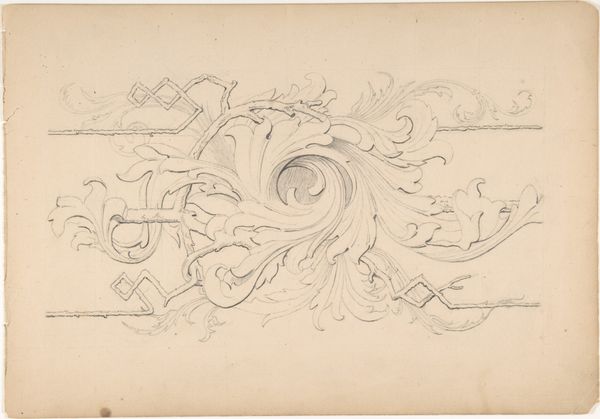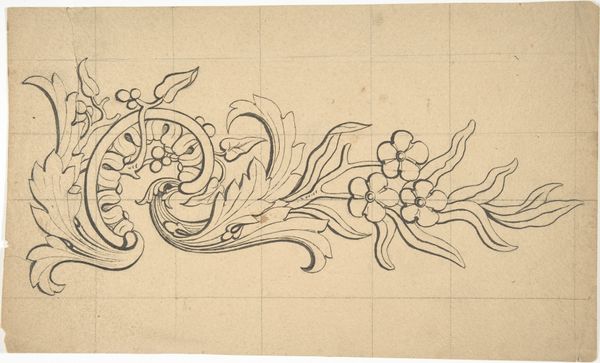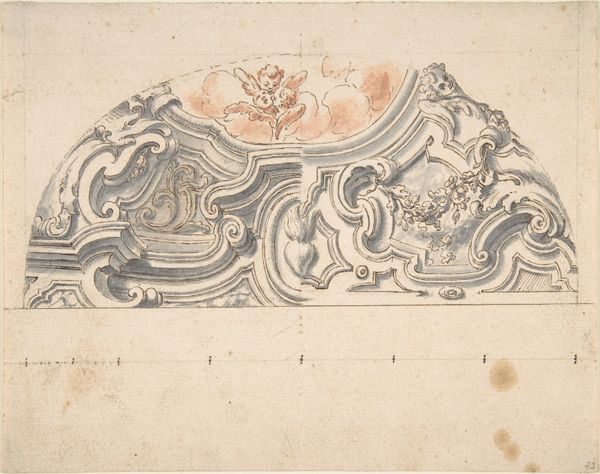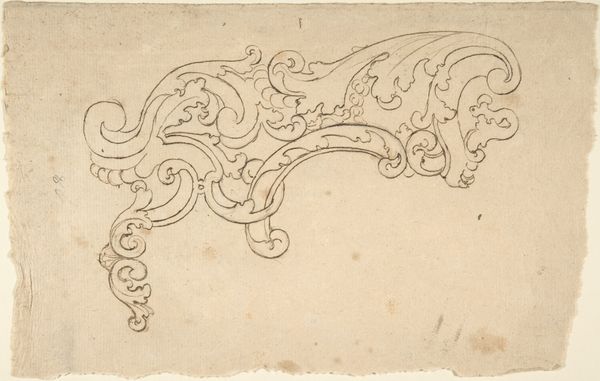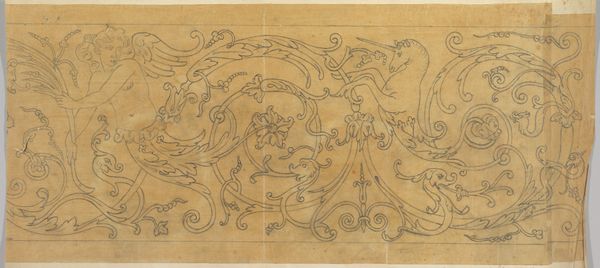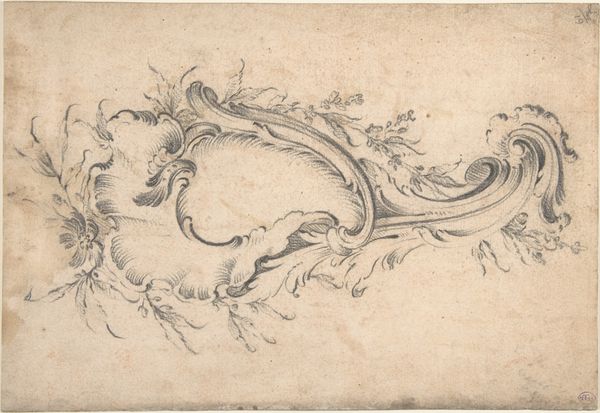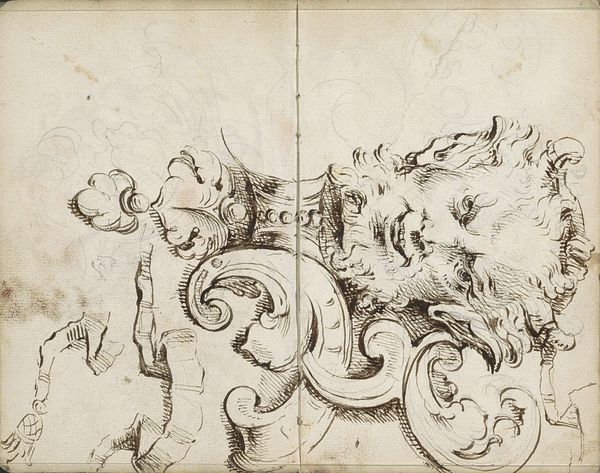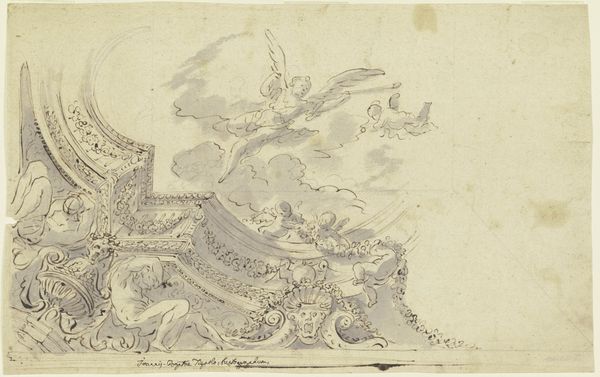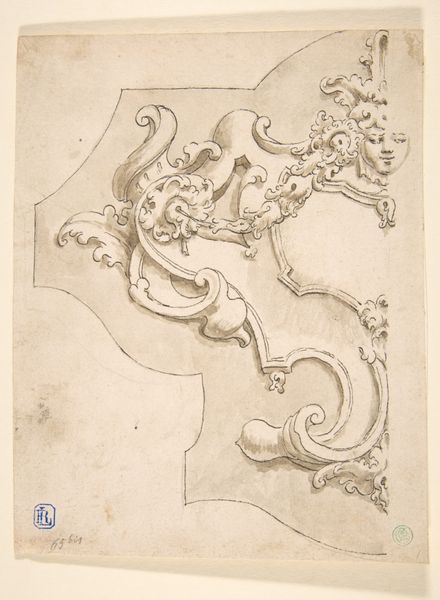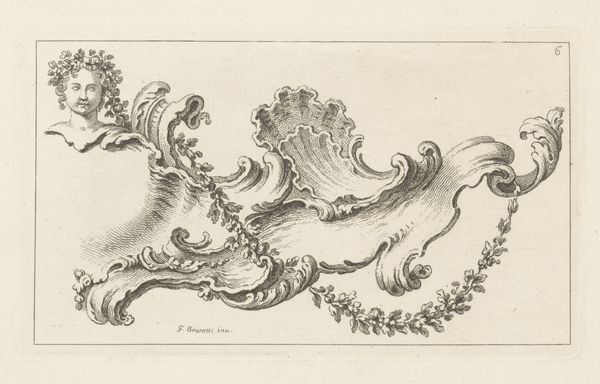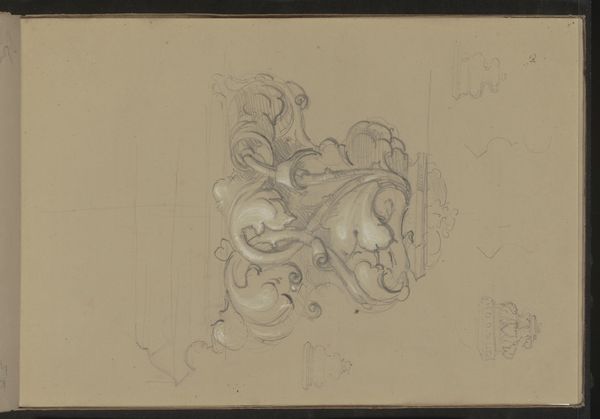
Designs for borders and corners, acanthus 1830 - 1904
0:00
0:00
drawing, pencil
#
drawing
#
toned paper
#
form
#
geometric
#
pencil
#
line
#
decorative-art
Copyright: Public Domain
Editor: So, this is "Designs for borders and corners, acanthus" from sometime between 1830 and 1904, credited to Robert William Hume. It's a pencil drawing on toned paper. What strikes me is how precise and technical it seems, like a blueprint for something. What stands out to you about it? Curator: It's interesting you call it a blueprint. I see this drawing within a much larger historical context – the rise of industrialization and the Arts and Crafts movement in the 19th century. The rigid grid underlying these flowing acanthus leaves reveals the tension between mechanized production and the desire for handcrafted, unique designs. How might this design have been used, and by whom? Editor: Maybe an architect or a furniture maker? Someone wanting to incorporate classical motifs, but needing a clear guide? Curator: Exactly! Consider the social status of art during this period. Ornamentation like this was meant to elevate the status of an object or a space, signaling refinement and culture, especially to a rising middle class. The grid, therefore, doesn't just aid in replication, but speaks to the standardization of taste within Victorian society. Does that change how you view the artwork? Editor: It does! It’s less about individual artistry, and more about fitting into a particular aesthetic mold. Almost like a visual language for upward mobility. So, the acanthus, a classical motif, becomes a symbol of aspiration. Curator: Precisely! And the drawing itself, originally meant for practical use, finds itself in a museum, transforming its role once again. It highlights how context fundamentally shapes how we understand and value art. Editor: I hadn't thought about its journey from a design plan to a museum piece. Thanks; this drawing holds much more history than I initially perceived. Curator: And that history continues to unfold with each new interpretation! The social life of art, isn't it fascinating?
Comments
No comments
Be the first to comment and join the conversation on the ultimate creative platform.
